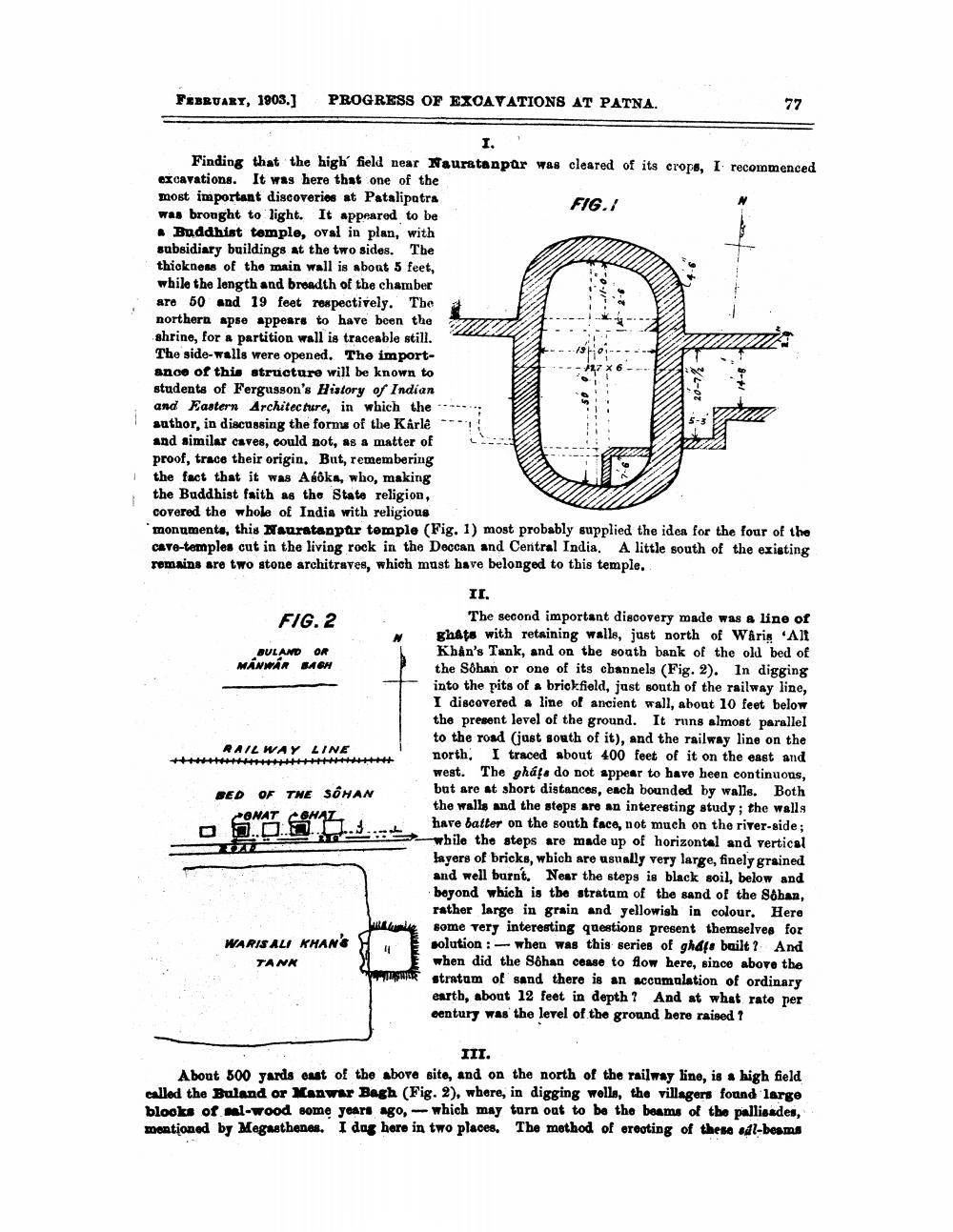________________
FEBRUARY, 1903.]
PROGRESS OF EXCAVATIONS AT PATNA.
Finding that the high' field near Nauratanpar was cleared of its crope, I recommenced excavations. It was here that one of the most important discoveries at Patalipatra
FIG./ was brought to light. It appeared to be * Buddhist temple, oval in plan, with subsidiary buildings at the two sides. The thickness of the main wall is about 5 feet, while the length and breadth of the chamber are 50 and 19 feet respectively. The northern apse appears to have been the shrine, for a partition wall is traceable still. The side-walls were opened. The importance of this structure will be known to students of Fergusson's History of Indian and Eastern Architecture, in which the *** ; author, in discussing the form of the Karle and similar caves, could not, as a matter of proof, trace their origin. But, remembering the fact that it was Abôks, who, making the Buddhist faith as the State religion, covered the whole of India with religious monuments, this auratappar temple (Fig. 1) most probably supplied the idea for the four of the CAT-temples cut in the living rock in the Deccan and Central India. A little south of the existing remains are two stone architraves, which must have belonged to this temple.
20-7h
FIG. 2
AULAND OR MÁNWAR SABH
RAILWAY LINE
BED OF THE SÔHAN
ZONAT GHAL. 2.0 20
The second important discovery made was a line of ghats with retaining walls, just north of Waris Alt Khan's Tank, and on the south bank of the old bed of the Sohan or one of its channels (Fig. 2). In digging into the pits of a brickfield, just south of the railway line, I discovered a line of ancient wall, about 10 feet below the present level of the ground. It runs almost parallel to the road (just south of it), and the railway line on the north, I traced about 400 feet of it on the east and west. The gháfa do not appear to have heen continuous, but are at short distances, each bounded by walle. Both the walls and the stops are an interesting study; the walls have batter on the south face, not much on the river-side; while the steps are made up of horizontal and vertical layers of bricks, wbich are usually very large, finely grained and well burnt. Near the steps is black soil, below and boyond which is the stratum of the sand of the Soban, rather large in grain and yellowish in colour, Here some very interesting questions present themselves for solution : -- when was this series of ghafo bailt? And when did the Sohan conse to flow here, since above the stratum of sand there is an accumulation of ordinary earth, about 12 feet in depth? And at what rato per century was the level of the ground here raised ?
WARIS ALI KHAN'S
TANK
III. About 800 yards out of the abovo sito, and on the north of the railway line, is a high field called the Buland or Manwar Bagh (Fig. 2), where, in digging wolle, the villagers found large blooks of Al-wood some years ago, which may turn out to be the beams of the pallisades, mentioned by Megasthenes. I dag here in two places. The method of erooting of these sdl-beams




